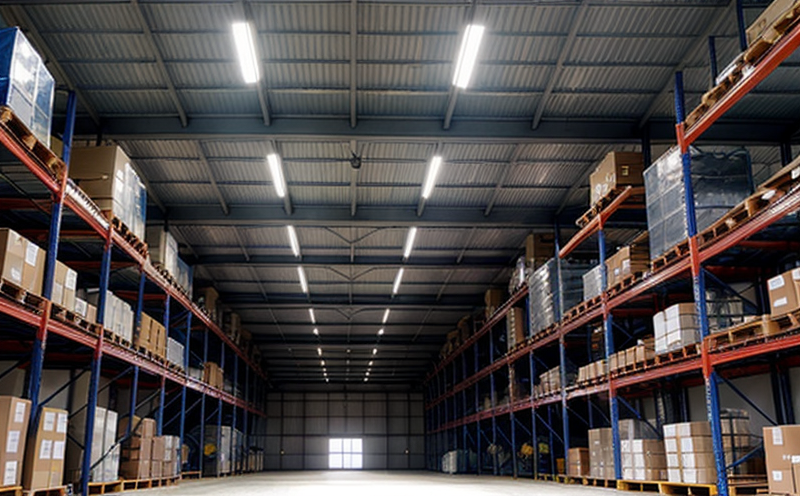Lighting system in warehouse inspection
The lighting system is a critical component of any warehouse and storage facility. Proper illumination ensures safe operations, enhances worker productivity, and helps maintain product integrity. Inadequate or poorly maintained lighting can lead to accidents, increased energy costs, and non-compliance with regulatory standards.
In this comprehensive service, our team conducts thorough inspections of the lighting systems in warehouses and storage facilities. Our approach is methodical and includes a detailed assessment of both the hardware and software aspects of the system. This ensures that we cover all relevant aspects that impact safety, efficiency, and compliance with industry standards.
Our inspection process begins with a review of the current lighting infrastructure. This involves evaluating the type of lamps used (LEDs, fluorescent, etc.), the age of the fixtures, and their overall condition. We then proceed to measure light levels across various areas of the warehouse using calibrated instruments that adhere to international standards like ISO 21539:2012.
The next step in our inspection process involves checking for compliance with relevant regulations such as AS/NZS 4568. This includes verifying that emergency lighting meets the required specifications and that all lights are functioning correctly at all times, especially during power outages.
Our team also examines the installation practices used by the facility to ensure they meet best practice guidelines outlined in standards like AS/NZS 1768.3:2015. This includes assessing whether proper mounting techniques have been employed and if there are any potential fire hazards due to improper wiring or placement of fixtures.
Additionally, we pay close attention to the energy efficiency of the lighting system since this is an increasingly important consideration for modern warehouses looking to reduce their carbon footprint and lower operational costs. Compliance with AS/NZS 4406:2017 on energy efficiency in buildings will be checked as part of our service.
Finally, we provide a detailed report summarizing all findings from the inspection along with recommendations for improvement where necessary. This document serves not only as evidence that due diligence has been performed but also as a roadmap for future maintenance activities aimed at keeping the lighting system up-to-date and effective.
Scope and Methodology
The scope of our lighting system inspection service includes all aspects related to the design, installation, operation, and maintenance of the warehouse's lighting infrastructure. Our methodology follows a structured approach that combines technical expertise with practical experience.
- Evaluating existing lighting hardware including lamps, ballasts, and fixtures
- Metric measurement of light levels using calibrated instruments
- Checking compliance with relevant regulatory standards such as AS/NZS 4568
- Assessing installation practices against best practice guidelines like AS/NZS 1768.3:2015
- Energy efficiency evaluation based on AS/NZS 4406:2017 criteria
| Aspect of Inspection | Method Used | Standards Referenced |
|---|---|---|
| Evaluation of Existing Lighting Hardware | Visual inspection and detailed review | AS/NZS 1768.3:2015 |
| Metric Measurement of Light Levels | Use of calibrated photometers | ISO 21539:2012 |
| Checking Compliance with Regulatory Standards | Review documentation and on-site verification | AS/NZS 4568 |
Environmental and Sustainability Contributions
Lighting systems play a crucial role in the environmental impact of warehouses. By ensuring that lighting is properly maintained, we help reduce energy consumption and contribute to overall sustainability efforts within these facilities.
Efficient lighting can significantly decrease electricity usage, which translates directly into lower greenhouse gas emissions. This aligns with broader goals set out by organizations like LEED (Leadership in Energy & Environmental Design), which encourages businesses to adopt eco-friendly practices wherever possible.
Our service goes beyond just checking compliance; it also offers advice on how facilities can further reduce their carbon footprint through better lighting choices. For instance, recommending the use of LED bulbs over traditional incandescent ones because LEDs consume less power while producing the same amount of light output.
Use Cases and Application Examples
- Warehouse Operations: Ensuring adequate lighting levels throughout the day helps improve worker safety and reduces the risk of accidents. It also boosts morale by creating a brighter, more pleasant work environment.
- Safety Compliance: Regular inspections help maintain compliance with OSHA regulations regarding workplace safety and health.
- Energy Efficiency: Identifying areas where energy can be saved through improved lighting design or better maintenance practices leads to cost savings for the facility.
- Eco-Friendly Practices: By focusing on sustainability, this service supports the broader goals of reducing waste and promoting green initiatives within the facility.
| Use Case | Expected Outcome |
|---|---|
| Accident Prevention through Adequate Lighting | Reduction in workplace injuries and associated costs. |
| Compliance with Workplace Safety Regulations | Avoidance of fines and penalties from regulatory bodies. |
| Cost Savings Due to Improved Efficiency | Lower utility bills through reduced energy consumption. |





